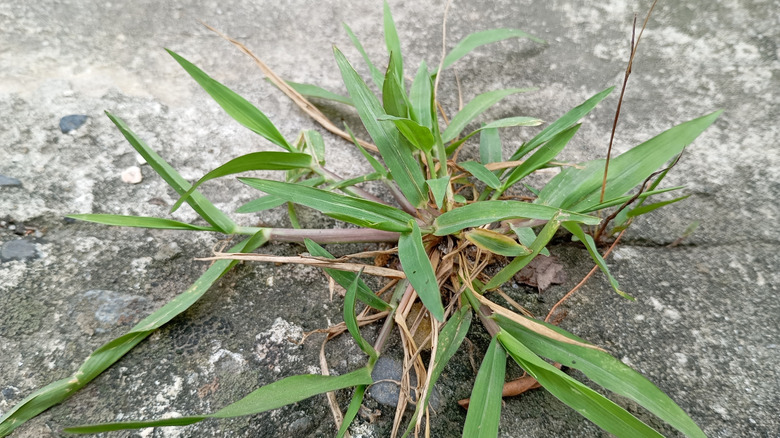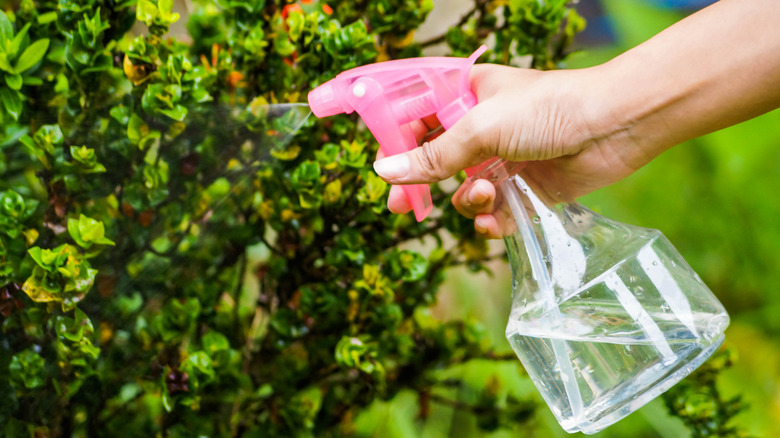The Unexpected Way You Can Use Vodka For Weed Control In Garden Gravel
Most people think of vodka as a party staple, not a weed and grass killer. But this household item can actually be a surprisingly effective solution for tackling unwanted weeds. Its power lies in the alcohol content. When sprayed directly onto weed leaves, vodka strips away the plant's waxy outer coating. Without that protective layer, the plant becomes vulnerable to sunlight. As the sun beats down, moisture evaporates rapidly from the leaves, leading to dehydration and eventual death.
This method works best on sunny days, as the heat intensifies the drying effect. It's particularly effective against broadleaf weeds like dandelions, ground ivy, and pokeweed. These plants have wide leaves that give the alcohol more surface area to work on, making it easier to break down their defenses. However, vodka is non-selective, meaning it will harm any plant it touches, not just weeds. You'll want to apply it carefully and keep it away from your lawn or nearby garden plants.
While vodka doesn't provide permanent weed control, it can weaken or damage root systems enough to prevent regrowth for several months. If you're steering clear of chemical herbicides, this alcohol-based method is a quick and low-toxic option worth trying. It's especially handy for zapping pesky weeds that pop up between gravel or cracks in walkways.
How to safely apply vodka to target weeds
Vodka might not be the first thing you think of in the garden, but it can be a surprisingly sharp weapon in your weed-fighting toolkit, as long as you use it carefully. The alcohol is potent enough to damage just about any plant it touches, so aim carefully, especially if you're working near turf or delicate flowers. To play it safe, it's best to dilute it. A commonly recommended homemade solution includes 1 ounce of vodka, 2 cups of water, and a few drops of liquid dish soap to help the mixture stick to the leaves.
Pour the mixture into a spray bottle and apply it directly to the weeds during sunny, dry weather. Avoid using this method on windy days, as drifting droplets could land on desirable plants and damage them. If you're targeting weeds around landscape gravel paths, garden statues, or nestled between stones, spraying is a quick and low-risk solution since hard surfaces won't be affected. But if you're working in a lawn or a rectangular flower bed, it's better to take a more precise approach to avoid harming nearby plants.
You can also brush the vodka mixture directly onto the leaves using a small paintbrush. This allows you to treat weeds such as dandelions without affecting the surrounding grass or flowers. Keep in mind, vodka-based sprays work best on broadleaf weeds, and they should not be used to treat grassy weeds like crabgrass. However, if weeds continue to return or spread, it may be time to consult a lawn care professional to explore longer-term solutions tailored to your garden's needs

